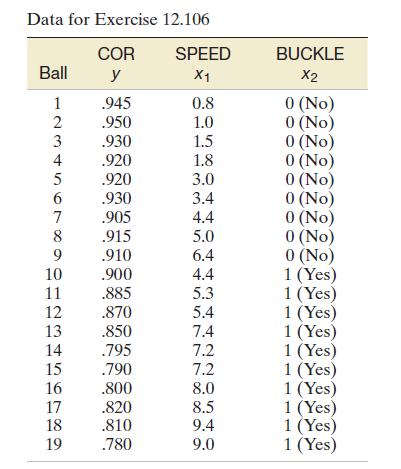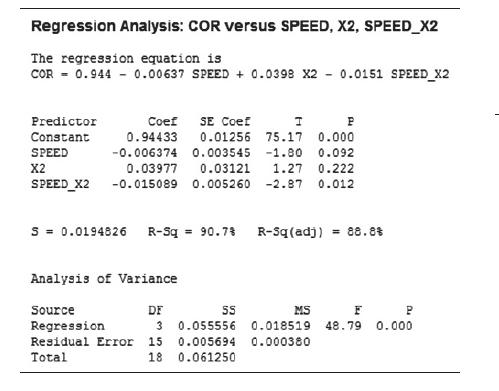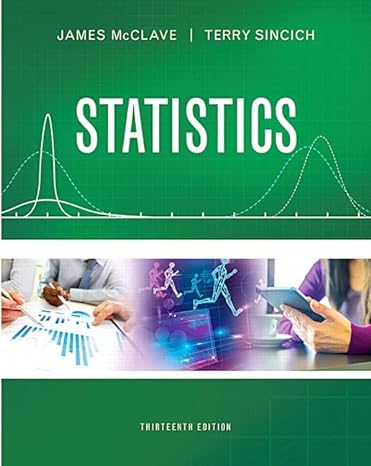Impact of dropping ping-pong balls. Refer to theAmerican Journal of Physics (Mar. 2014) study of the impact
Question:
Impact of dropping ping-pong balls. Refer to theAmerican Journal of Physics (Mar. 2014) study of the impact of dropping ping-pong balls, Exercise 11.122
(p. 666).
Recall that 19 standard ping-pong balls were dropped vertically onto a force plate. The data on y = coefficient of restitution (COR, measured as a ratio of the speed at impact and rebound speed), x1 = speed at impact
(meters/second), and x2 = 51 if ball buckled, 0 if not6 are reproduced in the table on p. 741. Consider the interaction model E1y2 = b0 + b1x1 + b2x2 + b3x1x2.
A MINITAB print out of the regression analysis is also shown on p. 741.
a. Give the equation of the hypothesized line relating COR (y) to impact speed (x1) for ping-pong balls that did not buckle. What is the estimated slope of this line?
b. Repeat part a for ping-pong balls that buckled.
c. The researcher believes that the rate of increase in COR with impact speed differs depending on whether the ping-pong ball buckles. Do the data support this hypothesis?
Conduct the appropriate test using a = .05.
Step by Step Answer:

Statistics Plus New Mylab Statistics With Pearson Etext Access Card Package
ISBN: 978-0134090436
13th Edition
Authors: James Mcclave ,Terry Sincich






